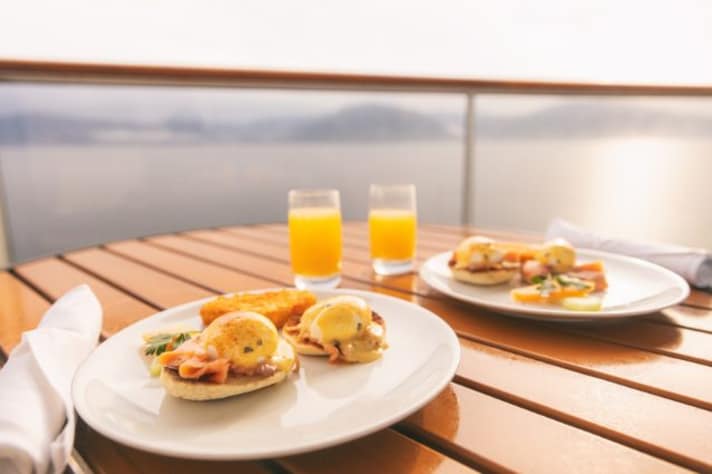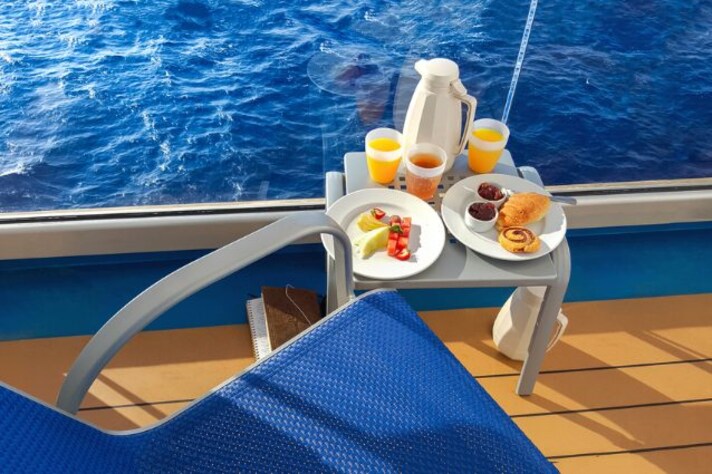
Imagine you’re sailing across the ocean on a luxurious cruise. You’ve just finished a gourmet dinner, and the next meal is already waiting for you. But have you ever wondered how these floating cities stock up on food to keep thousands of passengers fed for days or even weeks? When it comes to cruise ships, stocking food isn’t as simple as popping down to the local grocery store. There’s a well-oiled machine behind the scenes, ensuring that every meal, snack, and drink is perfectly timed—whether it's sunny and hot or chilly and stormy out there on the water.
The Cruise Ship’s Kitchen: A Floating Warehouse of Food
A cruise ship’s kitchen isn’t your average galley; it’s a massive, industrial-sized operation designed to feed up to 5,000 people daily. Think of it as a floating food warehouse that needs to be stocked with everything from fresh produce to packaged goods, frozen meats, and exotic seafood. The scale is mind-boggling—on a typical seven-day cruise, a ship might need over 200,000 pounds of food, and it all has to fit in the tight quarters of the ship’s storage spaces.
The food is stored in a multitude of temperature-controlled areas. You’ve got your dry storage for canned goods, grains, and spices; your refrigerated sections for dairy, meats, and produce; and your deep-freeze zones for frozen food. For each meal, there’s a complex planning system in place to ensure that ingredients are available when needed and don’t run out too soon. Because food is such a massive part of the cruise experience, ensuring that everything is stocked and available at all times is no small feat.
Summer Feasting: Stocking for Warm Waters
When a cruise ship sails during the warm summer months, the food stocking process has a few additional factors to consider. First off, summer is peak cruising season, so demand is high. This means larger shipments of fresh produce and perishable goods need to be carefully managed, as they won’t stay fresh for long. In the sweltering heat, items like fruits and vegetables have to be rotated quickly and stored at the right temperatures to avoid spoilage.

Cruise ships also have to consider the destinations they’re visiting in the summer. For example, a Caribbean cruise will need an entirely different set of supplies than one headed to the Mediterranean. As such, port stops become key to replenishing stores. Cruise ships often stock up at port cities known for their fresh local produce and seafood. This allows them to take advantage of regional delicacies, offering passengers a taste of the local cuisine without needing to cart everything from their home base in Florida or California. Fresh fish, tropical fruits, and even specialty spices are loaded on board while the ship is docked, making it possible to provide passengers with the freshest possible meals.
Winter Cruises: Cold Weather, Colder Challenges
As we head into winter, cruising becomes a different kind of adventure. Whether it’s the holidays or a trip through colder waters, there are some unique challenges when stocking food for winter cruises. For one, ship itineraries shift, and cruises may sail to places like Alaska or Northern Europe, where fresh produce can be harder to source during the cold months. The lack of local availability means cruise ships must rely on longer shelf-life items, like canned goods and frozen produce, to ensure that passengers are still well-fed without any disruption.
In colder weather, hot meals become a bigger priority. Comfort foods like stews, hot soups, and hearty roasts are more popular when temperatures drop, so cruise ships plan their meals around these warmer, more filling dishes. Storage in these months also becomes more focused on freezer space as the demand for frozen meat, fish, and vegetables rises. These ingredients are carefully stored and rotated to ensure their freshness, as freezing can extend the shelf life of products during the cruise.
Cruise Ship Logistics and Supply Chains
What most people don’t realize is that food doesn’t just appear out of nowhere. The process of stocking a cruise ship begins weeks, even months, before the ship ever sets sail. Cruise lines work with global supply chains to ensure that everything from international cheeses to artisanal breads and wines are available onboard. The timing and logistics are precise, and there’s a constant flow of food that keeps the cruise running smoothly.

In the months leading up to a cruise, procurement teams are in constant contact with suppliers, making sure everything is ordered and ready to go. Once the cruise ship docks for its last stop before embarkation, delivery trucks and cargo ships bring the fresh supplies on board. Everything is weighed, inspected, and stored appropriately, ready to be used when needed. Once the ship begins its voyage, replenishments are carefully planned with the cruise line’s port contacts in places like Miami, Vancouver, or Barcelona, to ensure that the food supply chain is never disrupted.
Waste Not, Want Not: Managing Leftovers and Redundancy
In the world of cruise food stocking, managing food waste is just as important as stocking up for the journey. Cruise ships are well aware of the delicate balance between over-purchasing and under-purchasing—too much food leads to waste, while not enough can leave passengers hungry and unhappy. To avoid these scenarios, redundancy is built into the food stocking process.
Each cruise ship will overstock slightly, ensuring there’s enough food in case of unexpected delays or last-minute menu changes. There’s also a meticulous system for tracking what’s been used and what’s left over to prevent waste. Leftover food is carefully stored or repurposed for later meals, and excess perishables are donated or sent to land-based facilities. This thoughtful approach helps keep food costs in check while also reducing the environmental impact of cruise operations.
;Resize,width=767;)
